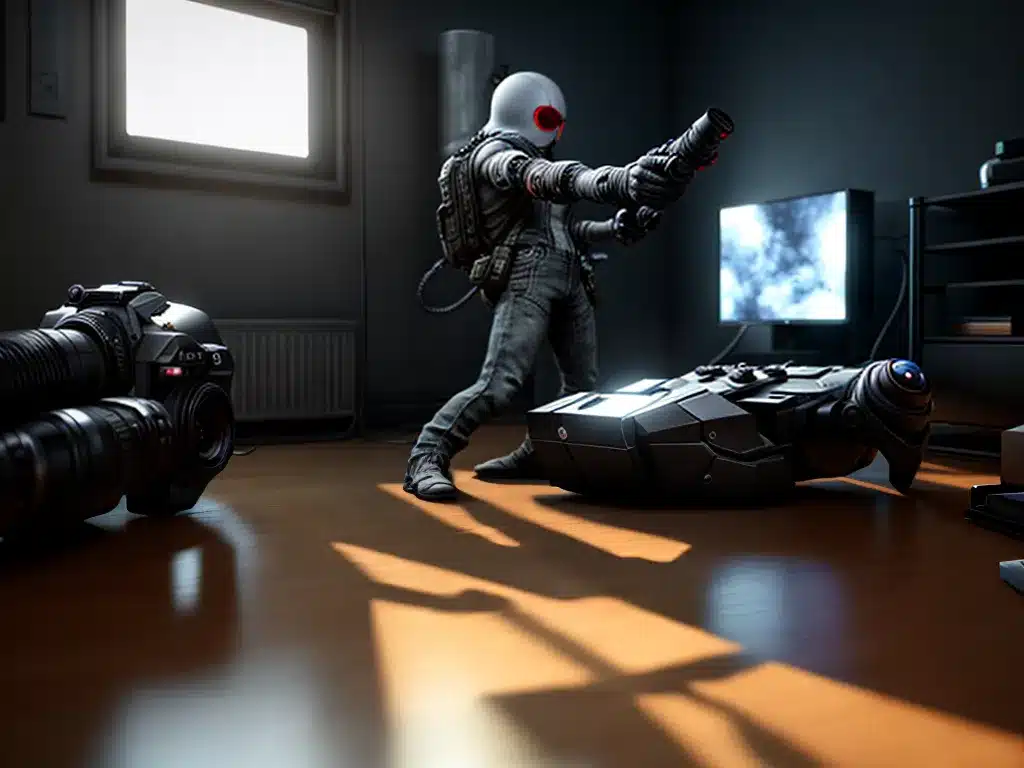Photorealism in Video Games: Pushing the Boundaries with Ray Tracing
For years, I have marveled at the increasing realism of video game graphics. With each new generation of gaming consoles and GPUs, developers are able to create more immersive and believable game worlds. The holy grail has always been photorealistic graphics that are indistinguishable from real life. This has remained elusive, but ray tracing technology is bringing us closer than ever before.
What is Ray Tracing and How Does it Work?
Ray tracing is an advanced graphical rendering technique that traces the path of light rays as they interact with objects in a scene. It simulates the physical behavior of light to achieve photorealistic effects.
Here’s a quick overview of how it works:
- The ray tracing algorithm tracks the trajectory of light rays from the camera through each pixel in the scene.
- The rays interact with 3D objects, casting reflections, refractions and shadows.
- The color and brightness of each pixel is calculated based on these light interactions.
- Additional effects like ambient occlusion, global illumination and depth of field can further enhance realism.
Compared to traditional rasterization techniques, ray tracing better captures the nuances of light propagation and materials. However, it requires tremendous processing power. Only with recent GPU advancements has real-time ray tracing in games become possible.
Ray Tracing Effects and Graphics Enhancements
With ray tracing, video games can render complex photorealistic effects in real-time:
-
Reflections: Smooth, accurate mirror-like reflections on objects like glass, metal or water.
-
Shadows: Soft, diffused shadows with smooth gradients, improving upon harsh rasterized shadows.
-
Refractions: Proper rendering of light bending when passing through transparent objects like glass or water.
-
Ambient occlusion: Subtle shading in corners and crevices where light is reduced. Adds depth and realism to scenes.
-
Global illumination: Realistic indirect lighting from light reflected between objects. Creates convincing lighting environments.
-
Depth of field: Cinematic camera effects replicating the focus falloff of real camera lenses.
These effects go a long way in enhancing perception of realism and immersion in games. Subtle nuances in lighting and materials are captured more accurately. Game worlds feel more authentic and three-dimensional.
Ray Tracing in Modern Gaming Hardware
Dedicated ray tracing hardware like Nvidia’s RTX GPUs have brought real-time ray tracing into the hands of consumers. Some key capabilities:
- RT cores – Custom units designed to accelerate ray tracing performance.
- Tensor cores – Improve deep learning algorithms to fill in information where rays fail.
- Hardware-accelerated ray tracing – Up to 10x faster than only software implementations.
- Hybrid rendering – Rasterization combined with ray tracing for efficiency.
AMD also offers ray tracing in RDNA 2 chips and the PlayStation 5 and Xbox Series X/S consoles have dedicated ray tracing acceleration. Expect rapid adoption in games going forward.
Ray Tracing in Major Game Titles
Many recent AAA games showcase stunning visuals powered by ray tracing. Here are some notable implementations:
-
Control – Deep reflections, diffuse global illumination and transparent effects.
-
Cyberpunk 2077 – Ray traced reflections, shadows, ambient occlusion and advanced diffusion.
-
Minecraft – Ray traced global illumination, reflections, shadows and emissives. Dramatically transforms the aesthetics.
-
Call of Duty: Black Ops Cold War – Ray traced shadows, ambient occlusion and Nvidia DLSS support.
-
Watch Dogs: Legion – Ray traced reflections and shadows complement the urban open world.
These games demonstrate how ray tracing can tangibly improve graphical fidelity and take it to new photorealistic heights. It renders scenes, lighting and materials closer to reality than ever thought possible in real-time.
The Future of Ray Tracing and Photorealism
Ray tracing sits at the bleeding edge of graphics capabilities. As the technology matures and GPU hardware improves, I expect ray tracing to become ubiquitous in all major game titles. We are steadily marching towards the real-time photorealistic rendering of fully dynamic scenes.
Some exciting possibilities on the horizon:
-
More advanced global illumination and ambient occlusion techniques.
-
Detailed ray traced audio for realistic acoustics.
-
Support for more transparent and layered materials.
-
Improved anti-aliasing through ray traced motion vectors.
-
Integration with virtual reality for heightened realism.
Ray tracing removes the shackles of rasterization, bringing photorealism within reach. The future looks bright for more immersive, visually stunning games. I cannot wait to see what boundaries developers will push next with ray tracing!













